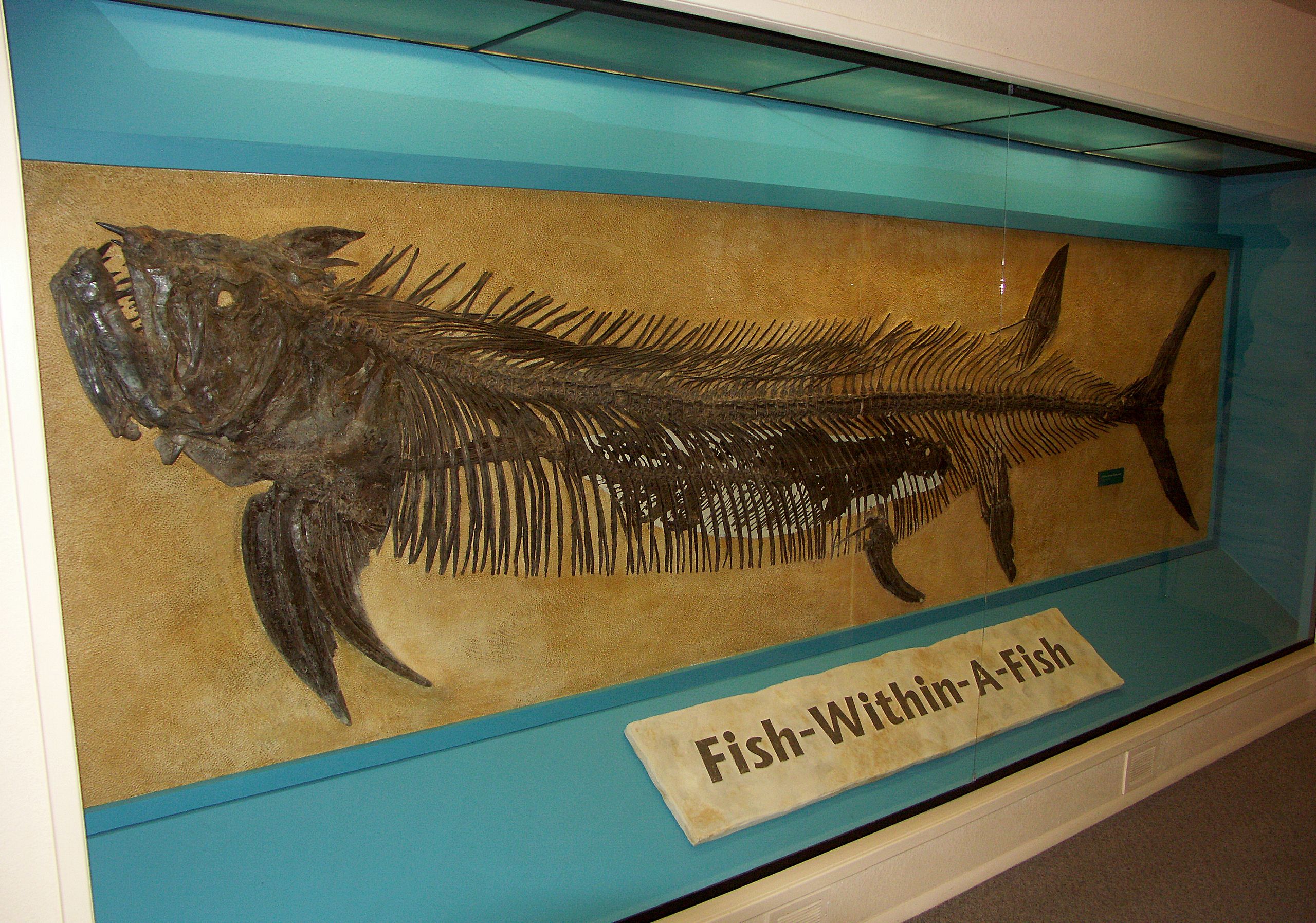Kansas Cretaceous Paisley
Xiphactinus, Hesperornis and mosasaurs oh my!
90 million years ago, the middle of North America was a lot cooler - and also, wetter. As the continent developed, the growing rocky mountains caused the continent to flex and bend down and the oceans flooded in. So while the land was full of dinosaurs, vast quantities of the continent were covered in ocean and the marine reptiles that loved it.
Mosasaurs like Tylosaurus and Clidastes lurked throughout the shallow waterway, swimming in between sharks to munch down whatever they could - including the diving bird Hesperornis.

But they weren't the only marine reptiles - plesiosaurs also roamed the depths, like the enormous long-necked Elasmosaurus.

An enormous jellyfish eating turtle known as Archelon also roamed the waters.

As did invertebrates, like the shell-clad squid known as ammonites.

But the most irritating of all the seaway residents by far was an enormous fish known as Xiphactinus.

This behemouth, bull-dog faced fish is known from many deposits, but is famous for both its abundance and its abundant appetite. At the Sternberg Museum in Hays, Kansas is a massive 12 foot long specimen of Xiphactinus that died while choking down a similarly massive 6 foot long specimen of Gillicus, another enormous fish that was just not quite big enough.

By Spacini at English Wikipedia, CC BY-SA 3.0, Link
As for its status as "most irritating" - Xiphactinus is very common! And apparently has a strong affinity for dying directly on top of other, more interesting fossils... like mosasaurs.
These fish and many of the other amazing denizens of the Western Interior Seaway were preserved in the chalk formations in the plains of North America, and have been transcribed here into Paisley form.
